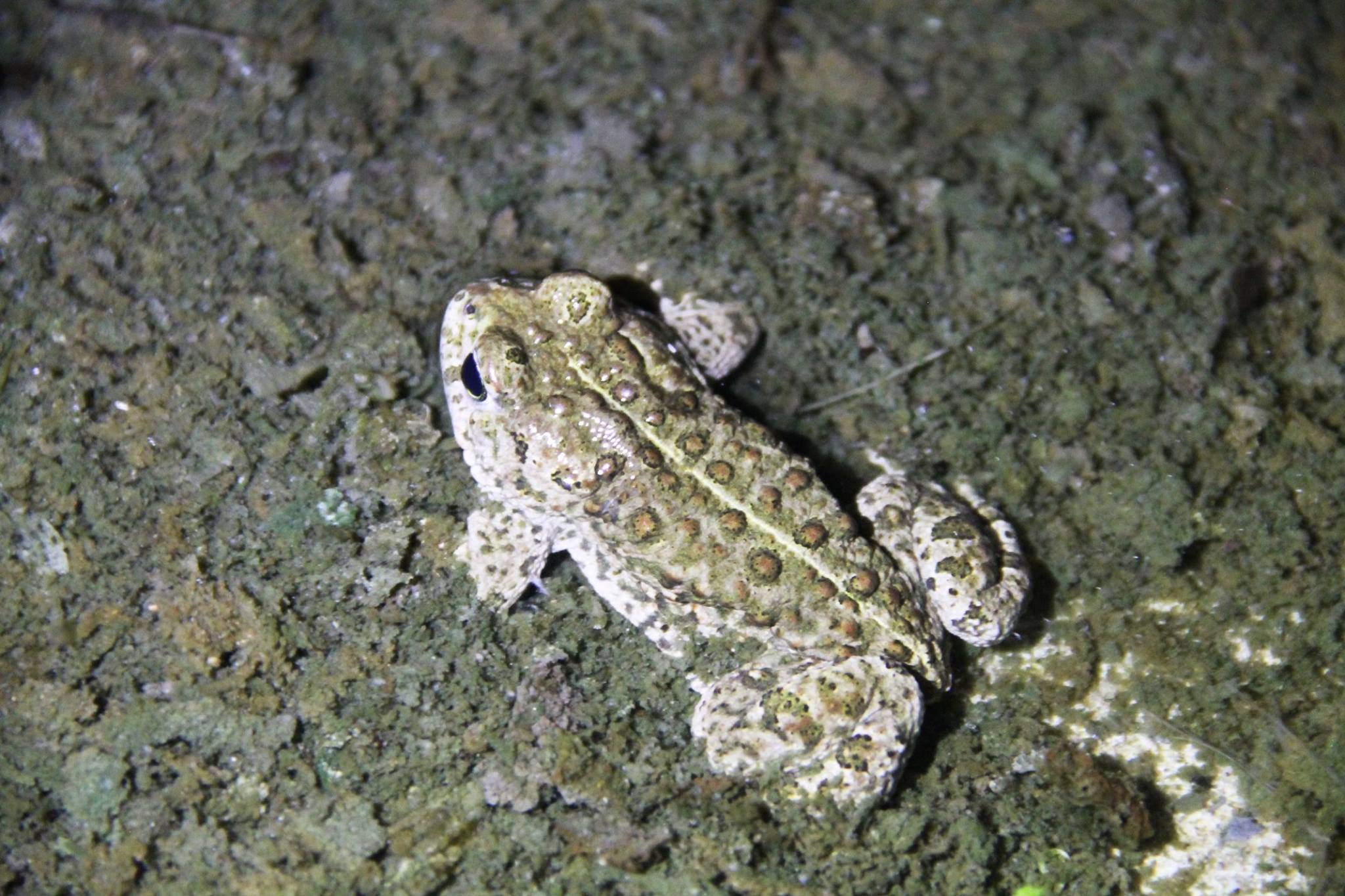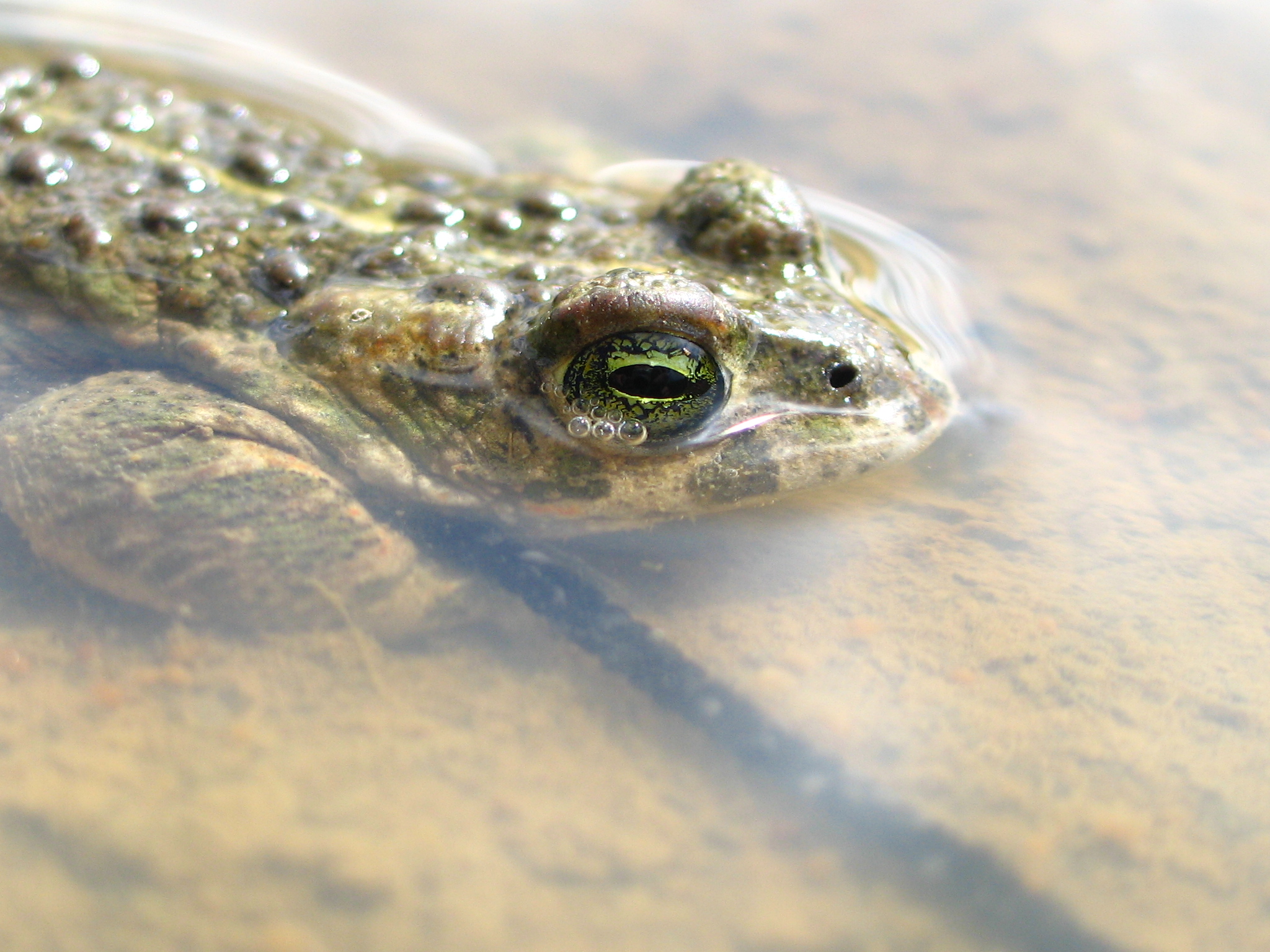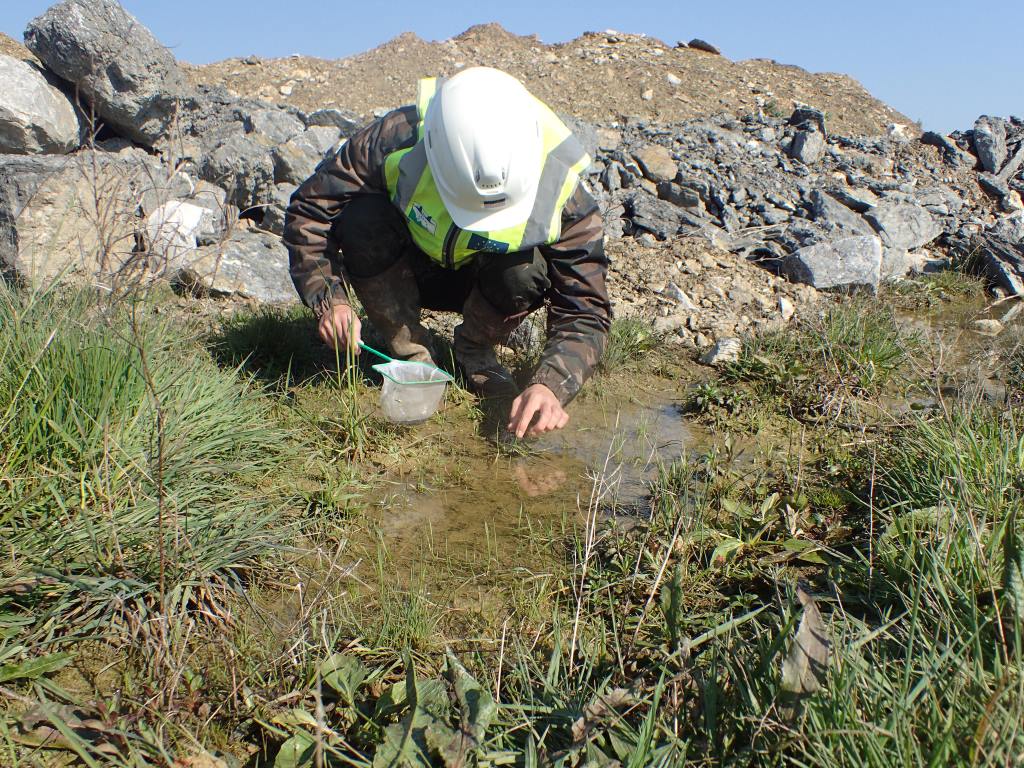This spring 2020, hundreds of Natterjack toad’s eggs have been transported to new “refuge sites” in the hope to see the juveniles of this endangered amphibian species grow back sustainable population.
Classified on the red list of amphibians of Wallonia, this small, pustular and stocky toad with light brown tones is a Natterjack Toad (Bufo calamita).
Easily recognizable by the thin yellow line that runs the length of its back and its yellow/green pupil – while it is a beautiful coppery orange in its cousin the Common Toad -, you are, yet, unlikely to come across it by chance.
Indeed, and however, the Natterjack toad is still considered as a species of “minor concern” at the European level, its population has drastically fallen in Wallonia, with the size of the remaining populations steadily declining.
The causes, sadly, are often the same. An increasingly fragmented range and natural habitats that have gradually disappeared from our modern landscapes.
The “Life in Quarries” travel agency
After it emerged from its annual hibernation phase, which lasts from October to early March (depending on climate change), Bufo calamita has enjoyed the pleasures of procreation in mid-April, after wich, it has layed thousands of eggs measuring 1 to 2 millimetres, grouped around thin cords up to two meters long.
For the Life in Quarries project teams, this time of the year means it’s time to act!
Indeed, in addition of its multiple missions, the Life in Quarries project conducts annual translocation campaigns for 3 species of endangered amphibians: the Crested Newt (Triturus cristatus), the Yellow-bellied Ringlet (Bombina variegata) and our star of the day ; the Natterjack Toad.
Our objective: to translocate them to several quarries where the species is absent. The reason why, the Life in Quarries teams have been, since early May, struggling to collect Natterjack toad’s eggs in several temporary “spring ponds”.
An ambitious and laborious process, that required careful preparation over several years.
So many variables were to be taken in count : defining the quarries from which the target species are absent, studying the populations present at each “source site”, drawing up inventories to ensure that sampling would not have a negative impact on the base population, testing these populations using genetic analyses to check the absence of several pathogens, identifying at each translocation site the most appropriate water points for each species or – in their absence – digging them out, watching over the exstence of a networks of ponds protected from construction machinery by natural defences…
The 2019 campaign having been a success, other quarries of the project on which the species has no chance to reach without a helping hand have been selected this year to come and deposit Natterjack’s eggs.
The sweet sound of backhoe loaders
Because Bufo calamita is not to be found in the gardens or the forests.
No, the Natterjack toad is a tough one and is not afraid of harsh landscapes that would look inhospitable at first sight to anyone. On the contrary, and as many other pioneer species like this little toad, it requires new, unstable, virgin, and organic-poor habitats. This is why it is found on industrial sites, such as quarries in service.
Professional stewards
Therefore, qualified partners, trained for this very special process, have been, this 2020 spring, criss-crossing Wallonia – paying particular attention to the special measures, dues to the COVID-19 pandemic required at the moment.
At the various “source sites” located within a radius of 20 kilometres of their respective “quarry sites”, our teams kneel down with a kneecap in the water, roll up their sleeves and try to recover the precious egg-laying fragments with all due gentleness. In order to minimise the impact of sampling on the source populations, a strict protocol provides for only a small part (+/- 10%) of the eggs to be removed, for a maximum of 50 eggs, spread over 2 years.
And if this mission is already far from easy, there are many additional difficulties!
Friable banks, clay pond whose water becomes cloudy at the slightest movement, terrible back pain following the maintenance of this crouching posture and long hours by car between the different quarries, inaccessible “source sites” because following the current pandemic, the way to get there has not been maintained…
Not to mention that in recent years we have seen a particularly sunny and warm spring. This year was no exception, so we had to wait a little while for the temporary pools intended to accommodate these “Natterjacks in becoming” to fill up thanks to the last rains.
Nevertheless, we can already announce that several samples and re-release of egg-laying fragments of the Natterjack toad have already been carried out. With a success…. that we will have to follow closely.







